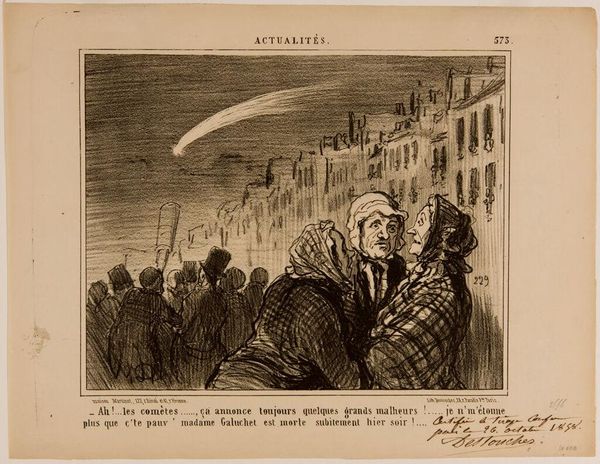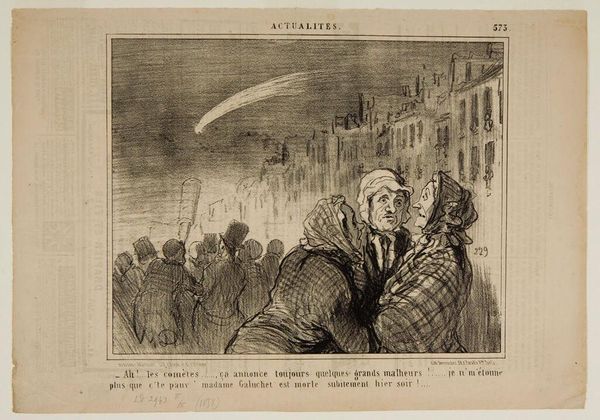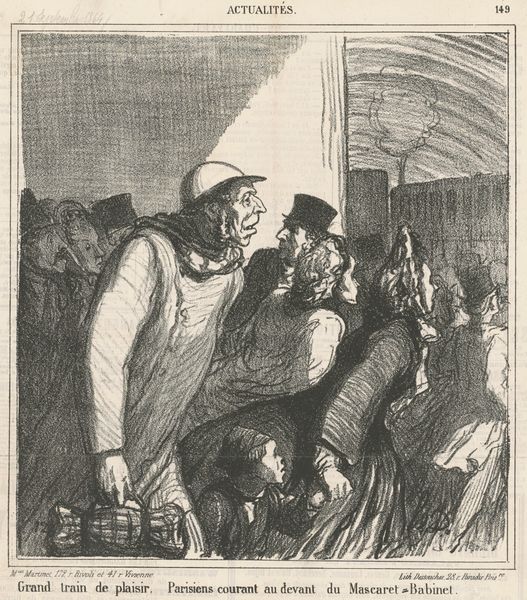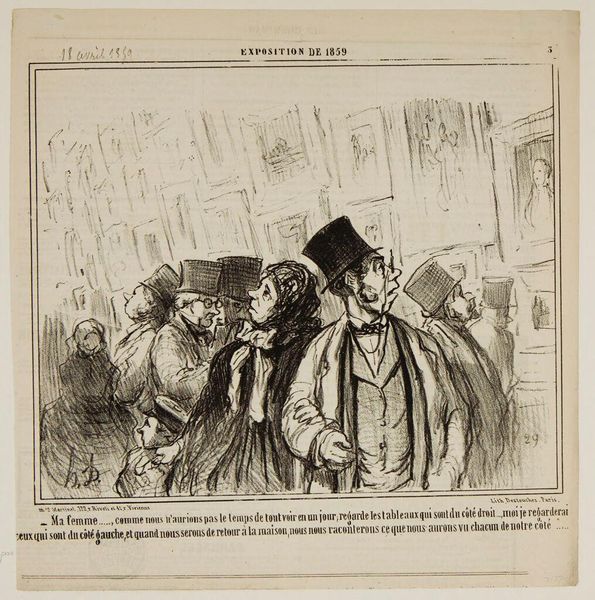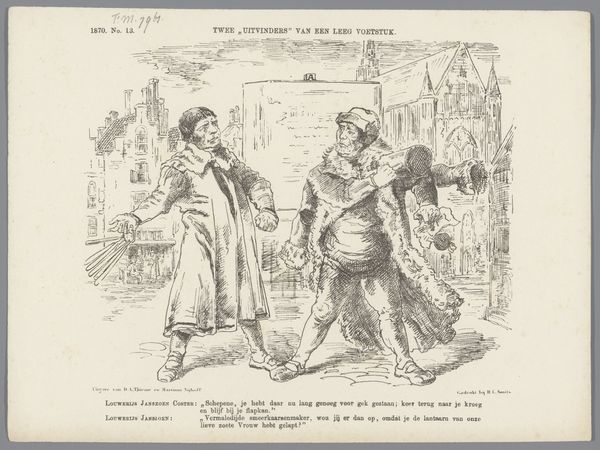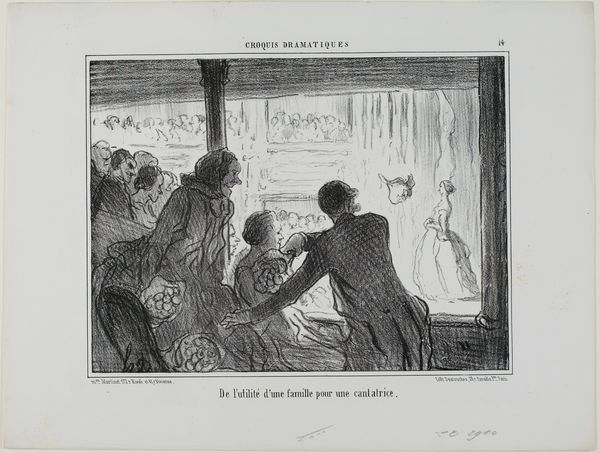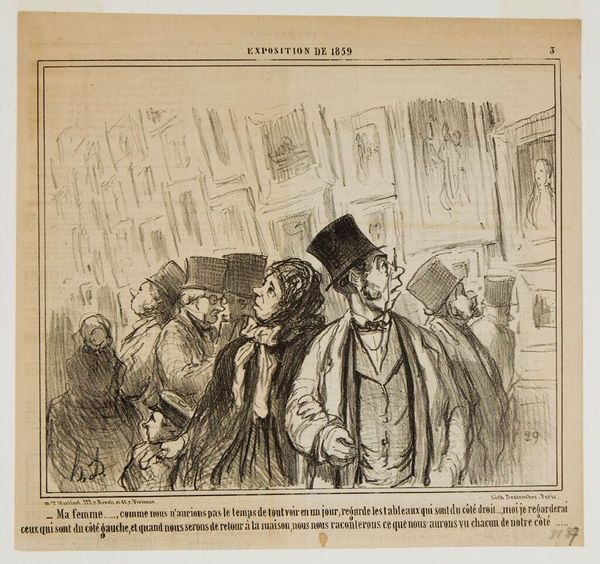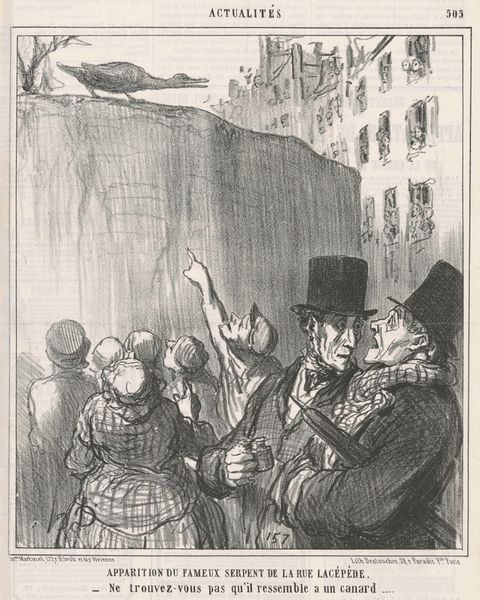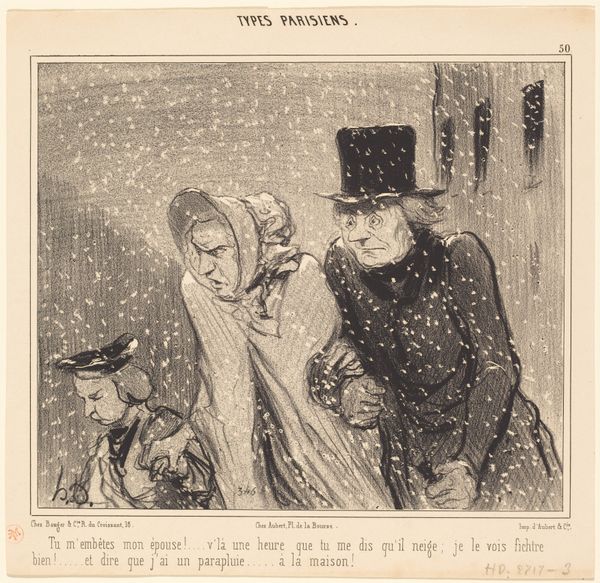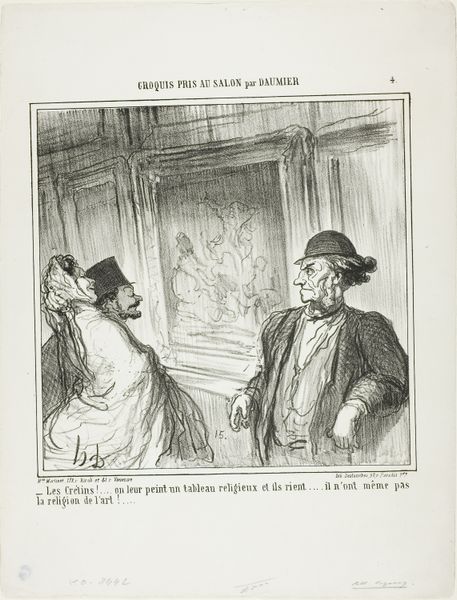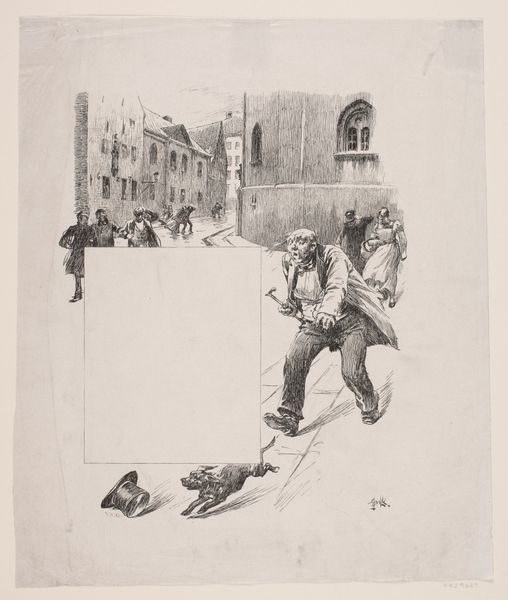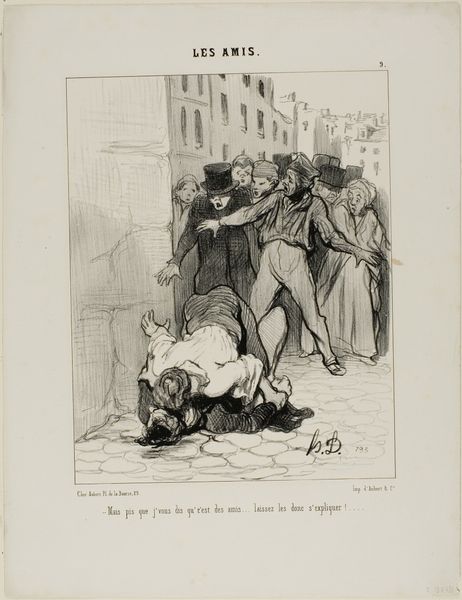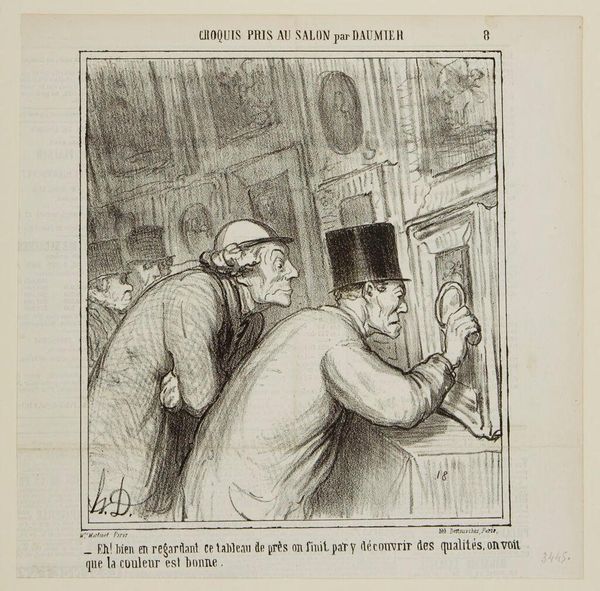
“- Ah yes, those comets, they always predict great misfortunes. It doesn't surprise me at all that poor Madame Galuchet suddenly died last night,” plate 573 from Actualités 30 - 1858
0:00
0:00
Dimensions: 204 × 251 mm (image); 275 × 358 mm (sheet)
Copyright: Public Domain
Curator: Honoré Daumier created this lithograph entitled "- Ah yes, those comets, they always predict great misfortunes. It doesn't surprise me at all that poor Madame Galuchet suddenly died last night," around 1858. Editor: My immediate reaction is one of dark amusement. The starkness of the lithograph, combined with the figures huddled in hushed tones beneath the comet, hints at a world ruled by superstition and gossip, with Madame Galuchet as the butt of the joke. Curator: Daumier masterfully captures the symbolic weight comets held. Throughout history, they've been perceived as omens, bearers of ill tidings, moments when the celestial and earthly realms collide. The comet here visually punctuates the absurdity of their fear. Editor: Absolutely, but consider the broader social context. In 19th-century France, anxieties about societal change, class divisions, and political instability were rife. Linking personal misfortunes to celestial events is a deflection, a way to avoid confronting more profound structural issues, which for Madame Galuchet, is tragic. Curator: That's a keen point. This links back to the powerful tradition of seeing symbols within everyday life. These ordinary individuals, wrapped in their own drama, are as important for him as any allegorical subject. The cultural memory around such events allowed Daumier to resonate widely. Editor: I see it as less an innocent cultural memory and more a pointed critique of social failings. Note the composition; the women are placed centrally, conspiratorial, yet oblivious to real systemic inequalities that impact their lives. It's satire with a deeply feminist undertone, exposing the absurdity of blaming cosmic forces for earthly issues. Curator: I can appreciate that reading, especially considering Daumier's general social critique. He did capture that shared human trait of seeing the miraculous within the mundane. That resonates, no matter the underlying socio-political landscape. Editor: Agreed, although for me, it resonates most powerfully as a cautionary tale. I am still wondering what poor Madame Galuchet suffered to make her neighbors believe she could be tied to such a universal ill omen. This is, more than anything, a visual plea for empathy amid superstition.
Comments
No comments
Be the first to comment and join the conversation on the ultimate creative platform.
